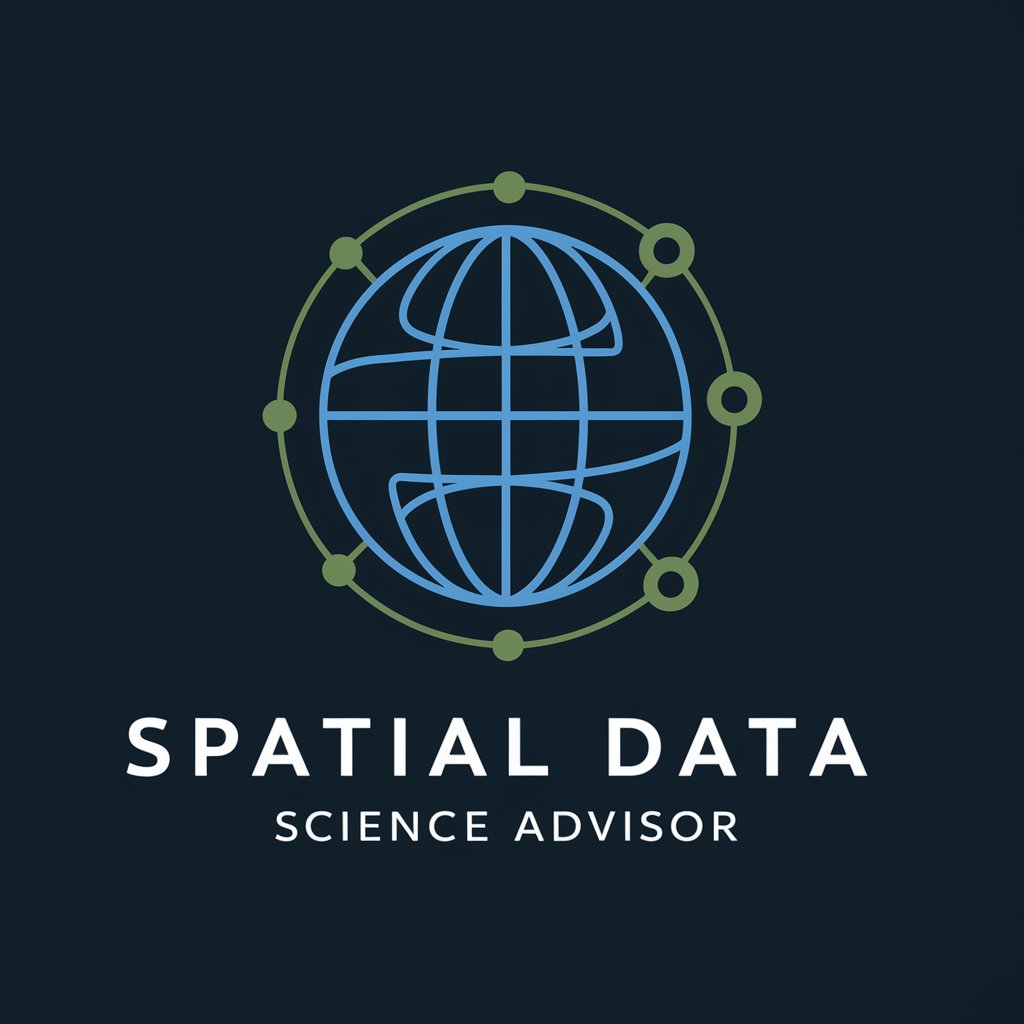
Spatial Data Science Advisor - GIS Data Insights

Welcome! Let's explore the world of spatial data science together.
Empower Your Maps with AI
Explain the benefits of using spatial analysis in urban planning.
How can the ArcGIS API for Python be used to analyze traffic patterns?
What are the key features of the geourban API for urban simulations?
Describe the process of geocoding and its importance in spatial analysis.
Get Embed Code
Introduction to Spatial Data Science Advisor
Spatial Data Science Advisor is designed to assist users in leveraging ArcGIS libraries and popular Python frameworks for spatial data science and location intelligence solutions. It focuses on providing guidance on using the ArcGIS API for Python within a Jupyter notebook environment, facilitating tasks ranging from geospatial data visualization, analysis, and manipulation to more complex geospatial modeling and predictions. Through scenarios like urban planning, environmental monitoring, and emergency response, it demonstrates how spatial data can inform decision-making processes. For instance, analyzing traffic patterns to optimize urban mobility or using satellite imagery to monitor environmental changes illustrates the application breadth. Powered by ChatGPT-4o。

Main Functions of Spatial Data Science Advisor
Geospatial Data Visualization
Example
Creating interactive maps to display real-time traffic data.
Scenario
Urban planners use this function to monitor traffic flow and congestion, aiding in the design of more efficient road networks.
Spatial Analysis
Example
Determining the best location for new public services based on population density and accessibility.
Scenario
City governments apply this analysis to identify underserved areas and plan the placement of facilities like libraries, parks, or clinics to ensure equitable access.
Predictive Modeling
Example
Forecasting flood risk areas using historical data and climate models.
Scenario
Environmental agencies use predictive models to identify high-risk zones for flooding, enabling proactive disaster preparedness and resource allocation.
Data Manipulation and Processing
Example
Automating the cleanup and standardization of disparate geospatial datasets.
Scenario
Researchers benefit from streamlined data preparation processes, allowing for more time to be spent on analysis rather than data preprocessing.
Ideal Users of Spatial Data Science Advisor Services
Urban Planners and Geographers
Professionals in urban planning and geography can leverage spatial analysis and visualization capabilities to inform land use decisions, infrastructure development, and environmental conservation efforts.
Environmental Scientists
Environmental scientists use spatial data science to monitor ecosystems, assess natural resource management, and predict environmental changes, aiding in the development of sustainable practices.
Emergency Response Teams
Emergency response organizations utilize location intelligence for risk assessment, resource allocation, and response planning, enhancing their ability to act swiftly and effectively in crisis situations.
Public Health Officials
Public health officials apply spatial data science to track disease outbreaks, identify high-risk populations, and plan healthcare services, contributing to improved public health outcomes.

Using Spatial Data Science Advisor
1
Visit yeschat.ai to start exploring Spatial Data Science Advisor for free, no login or ChatGPT Plus subscription required.
2
Identify your spatial data analysis needs, such as urban planning, environmental monitoring, or location intelligence for business insights.
3
Consult the Spatial Data Science Advisor for guidance on utilizing ArcGIS API for Python, GeoPandas for geospatial data processing, or other relevant tools and libraries.
4
Apply recommended techniques and code snippets for your specific project, utilizing Jupyter notebooks for an interactive experience.
5
Review and iterate on your spatial analysis workflows with the Advisor's help, leveraging the latest geospatial APIs and data science best practices for optimized outcomes.
Try other advanced and practical GPTs
InstructionalCoach
Empowering Educators with AI-driven Insights

Road Warrior Customizer - Armored Edition
Transforming Vehicles into Survivors

GlobalPizza GPT
Craft Your Dream Pizza with AI

Bot to Get Rich
AI-powered Wealth and Business Wisdom

Red Letter Oracle
Direct insights from Jesus's words, powered by AI.

7人の賢者
Unleash the Power of AI-Powered Diverse Insights

Quantum Semantic Automata in Large Nueral Networks
Harnessing Quantum Power for Deeper AI Understanding

Regenerative Farming Expert
Cultivating Sustainability with AI

Essay Typer Synth
Empower Your Writing with AI

Essay Editor Prodigy: AI-Powered Editing Assistant
Perfect Your Writing with AI Insight

IsoBuild
AI-powered Architectural Imagery

Mythical Illustrator
Bringing Mythical Visions to Life with AI

Spatial Data Science Advisor Q&A
What is the Spatial Data Science Advisor?
The Spatial Data Science Advisor is an AI-powered tool designed to guide users in leveraging spatial data science and GIS technologies effectively. It offers recommendations on tools like ArcGIS API for Python, GeoPandas, and more, for a range of applications from urban planning to environmental analysis.
How can I integrate ArcGIS API for Python with my spatial data science projects?
The Advisor provides step-by-step guidance on setting up and using the ArcGIS API for Python, including how to authenticate with your ArcGIS Online account, access and manipulate GIS data, perform spatial analysis, and visualize results in a Jupyter notebook environment.
Can the Advisor recommend open-source alternatives for spatial data analysis?
Yes, the Advisor can recommend open-source libraries such as GeoPandas for processing geospatial data. It includes examples and best practices for reading, manipulating, and analyzing spatial data in Python, suitable for users seeking free and powerful GIS solutions.
What are some common use cases for consulting the Spatial Data Science Advisor?
Common use cases include urban and regional planning, environmental monitoring, resource management, transportation logistics, and market analysis. The Advisor helps users apply spatial analysis techniques to solve real-world problems across these domains.
How does the Advisor support users new to spatial data science?
For newcomers, the Advisor offers an accessible entry point into spatial data science by explaining complex concepts in simple terms, providing practical code examples, and suggesting resources for further learning, making it easier to start with GIS and spatial analysis.





